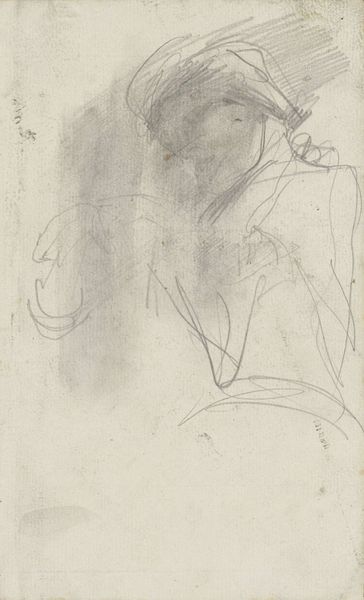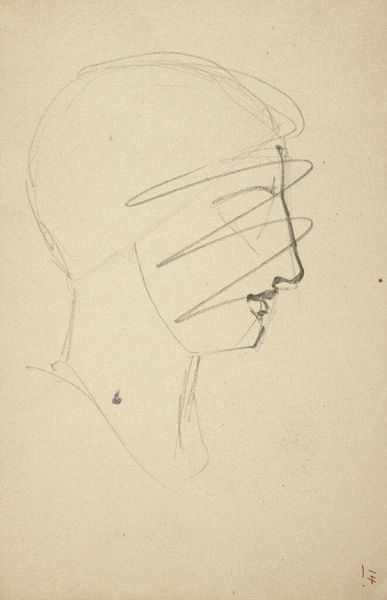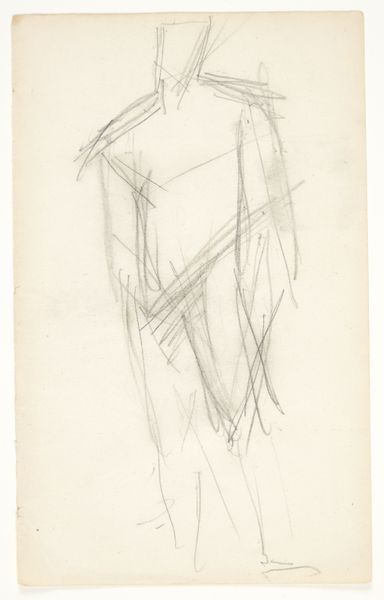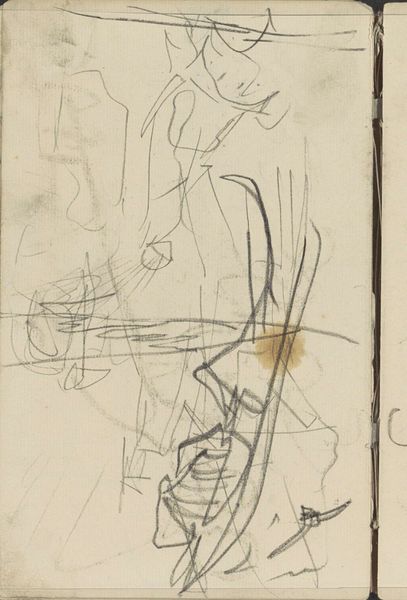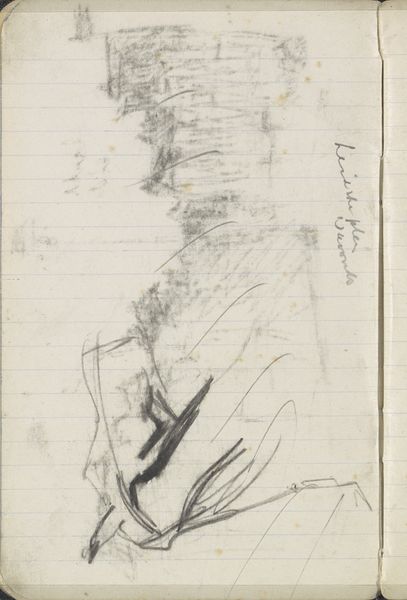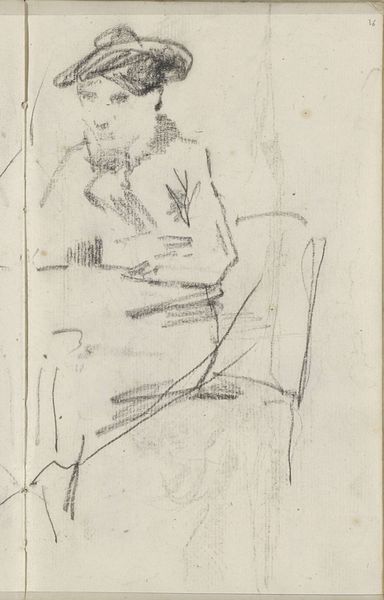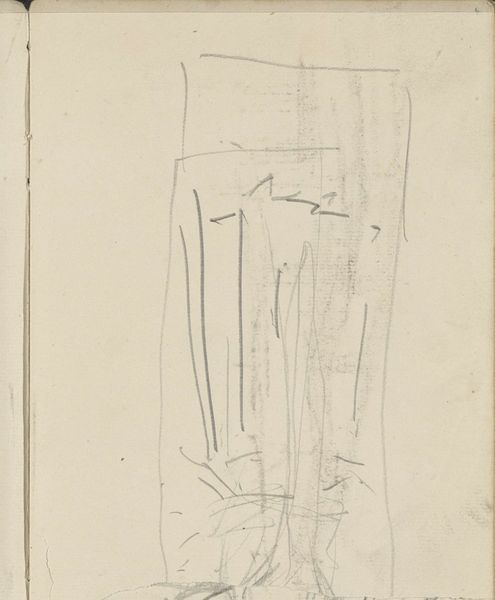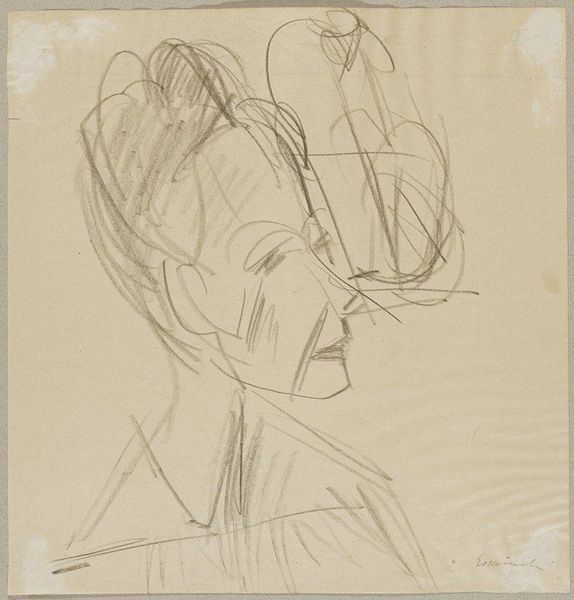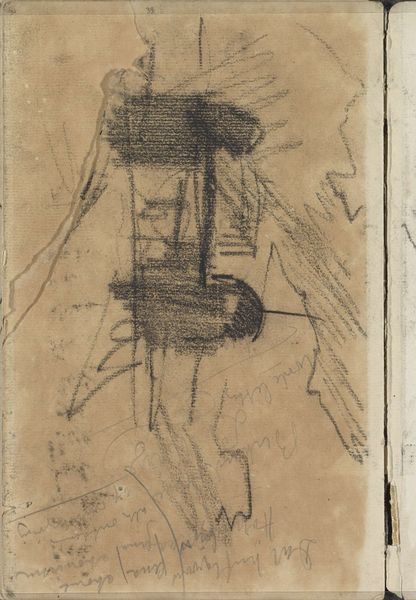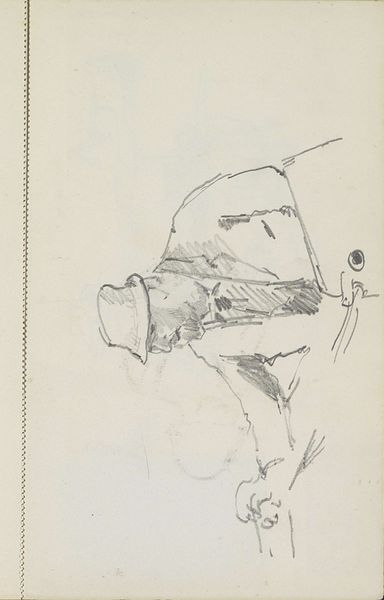![Study of a Woman [verso] by Franz Kline](/_next/image?url=https%3A%2F%2Fd2w8kbdekdi1gv.cloudfront.net%2FeyJidWNrZXQiOiAiYXJ0ZXJhLWltYWdlcy1idWNrZXQiLCAia2V5IjogImFydHdvcmtzL2Q3YzkyMzExLTI5ZTctNGVkOC1iZDZiLWUwZGFkODhhOGIzMS9kN2M5MjMxMS0yOWU3LTRlZDgtYmQ2Yi1lMGRhZDg4YThiMzFfZnVsbC5qcGciLCAiZWRpdHMiOiB7InJlc2l6ZSI6IHsid2lkdGgiOiAxOTIwLCAiaGVpZ2h0IjogMTkyMCwgImZpdCI6ICJpbnNpZGUifX19&w=1080&q=75)
drawing, pencil
#
abstract-expressionism
#
drawing
#
pencil
#
abstraction
#
line
#
modernism
Dimensions: overall: 30 x 22 cm (11 13/16 x 8 11/16 in.)
Copyright: National Gallery of Art: CC0 1.0
Curator: At first glance, it evokes a sense of fragility, perhaps even anxiety, wouldn’t you agree? There’s something hesitant and unfinished about the line work. Editor: Precisely, though before we interpret the mood too extensively, perhaps we should introduce our listeners to this compelling drawing. This is Franz Kline's "Study of a Woman [verso]", created circa 1945. The artwork, rendered in pencil, gives an early glimpse into Kline’s development toward abstract expressionism. Curator: The use of line here is striking. There are areas of clear figuration and then stark, vertical marks that almost obliterate the woman's face. Is this perhaps symbolic of mid-century erasure or societal pressure experienced by women? Editor: It's fascinating that you connect these harsh, confident lines with that erasure. To me, they suggest a disruption or perhaps a spiritual intervention, disrupting a smooth reading of a portrait and challenging a conventional ideal of feminine representation. Notice also the almost spectral rendering of the figure itself: that translucent body. Kline here has revealed much by drawing back so much, stripping the figure down to the thinnest indication of a woman’s presence. Curator: I see what you mean. Yet there's a palpable tension between the representational lines suggesting a form and those abstract strikes. The dialogue seems particularly fraught when viewed in relation to the social and political upheavals happening during and immediately after World War II. Was the very notion of representation—especially the representation of women—under question? Editor: I agree completely. In iconographic terms, this opposition serves as a visual push-and-pull, almost like an embodied psychological wrestling match, where visible presence contests something suppressed and concealed. The face, typically a focal point of identity and recognition, has been defaced to point to an underbelly of complex interiority. Curator: A complex interiority that mirrors the era itself—the push and pull of tradition versus progress. Perhaps the artist felt that external societal structures were actively masking individual narratives. Editor: A powerful and fitting connection, and something which reminds us of how Kline's exploration transcends mere aesthetic technique and enters into the domain of broader cultural narratives. Thank you for joining me today; I can't wait to see where our next inquiry takes us. Curator: Indeed. Understanding these complex relationships between art, symbol, and society reveals much about the artist’s experience and the enduring value of these artistic records.
Comments
No comments
Be the first to comment and join the conversation on the ultimate creative platform.



